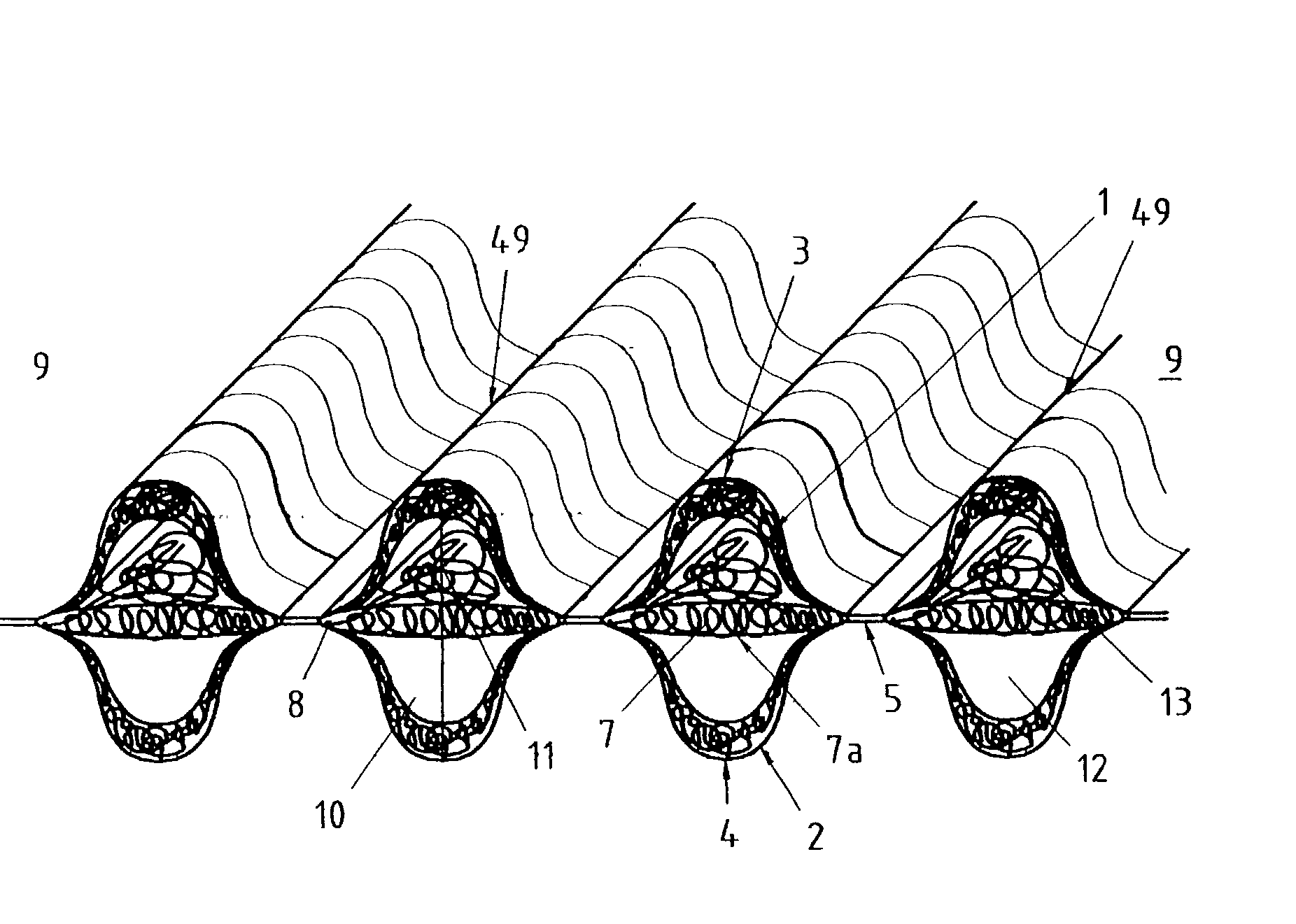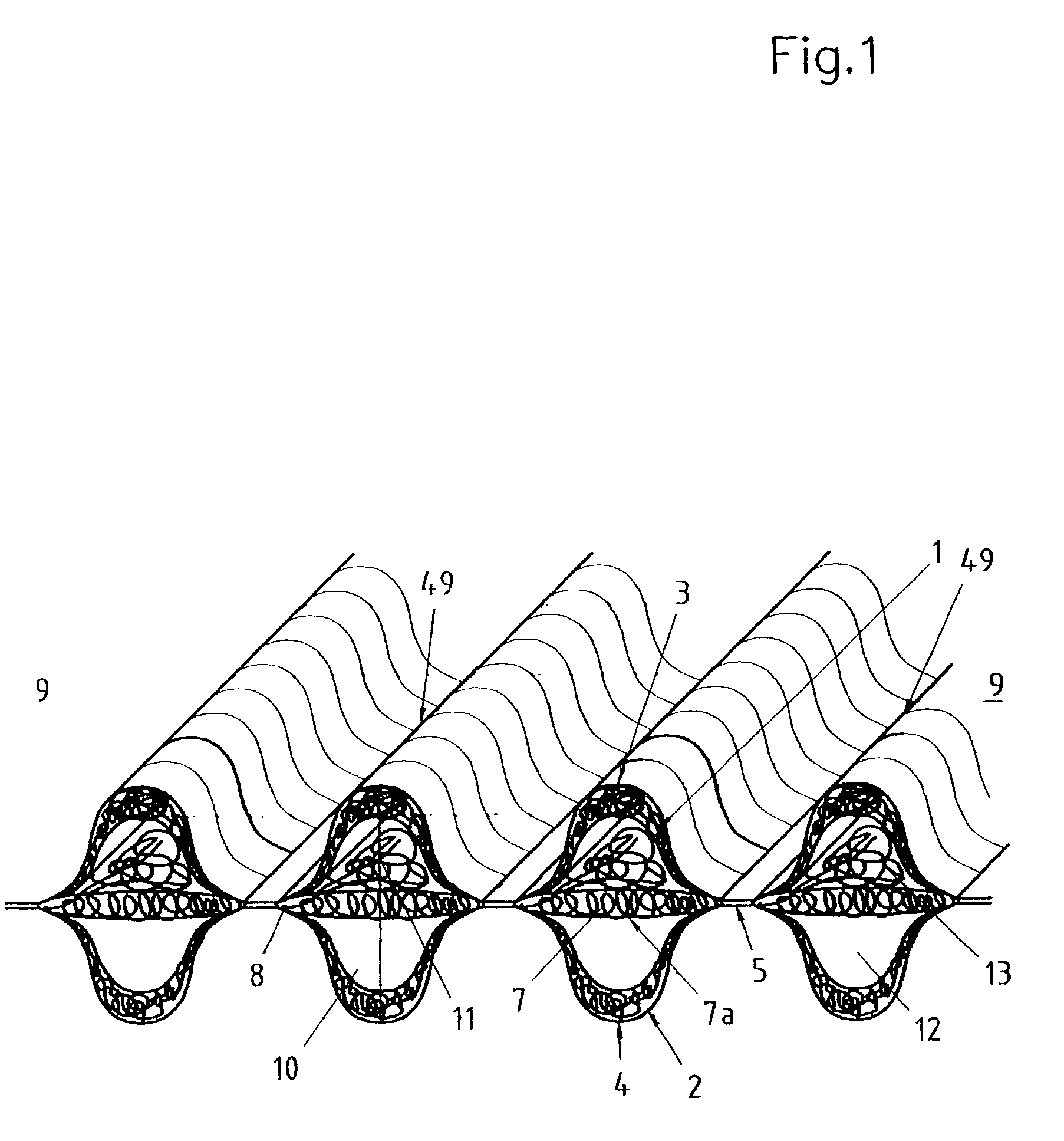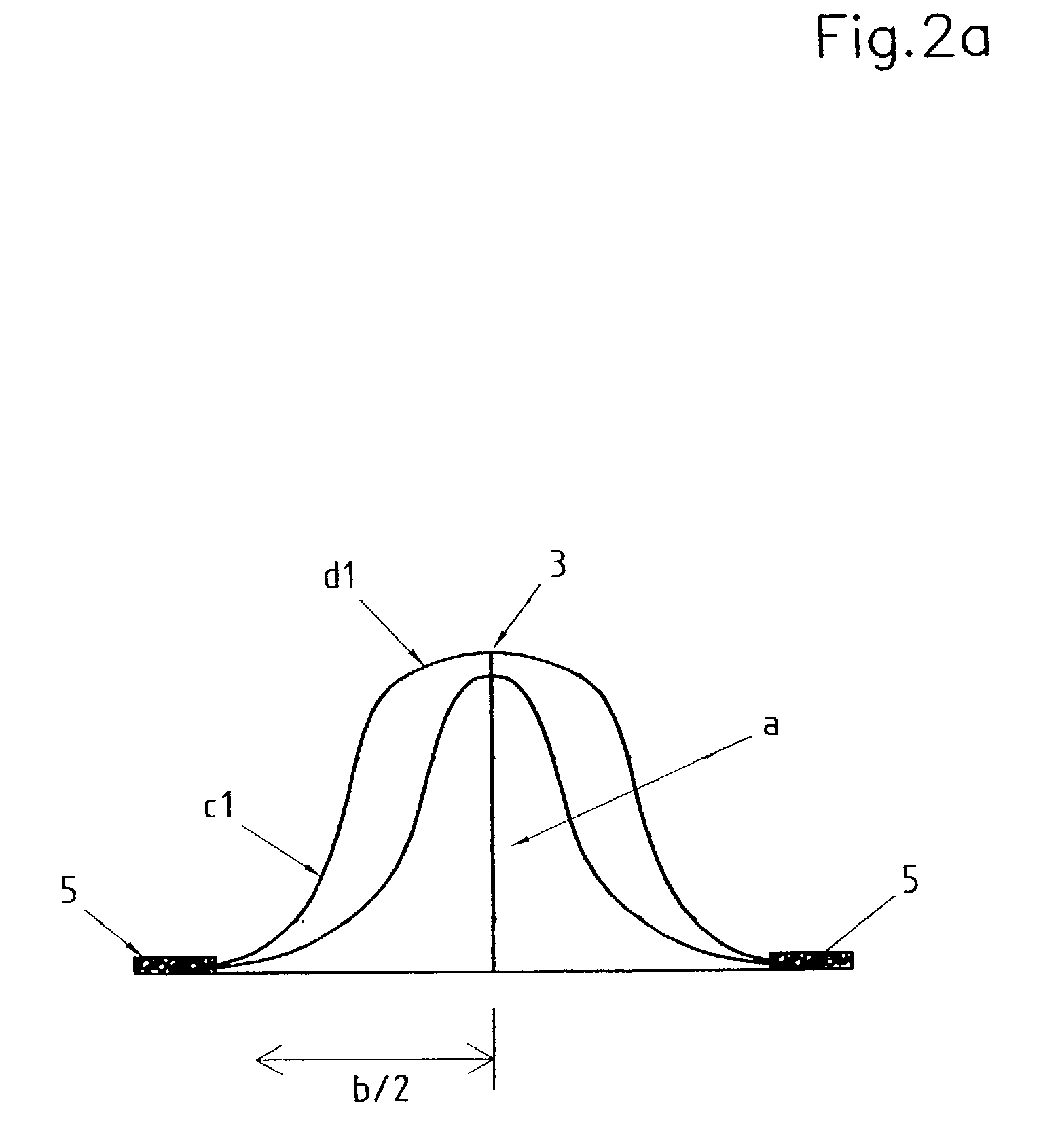Regularly structured nonwoven fabrics, method for their manufacture, and their use
- Summary
- Abstract
- Description
- Claims
- Application Information
AI Technical Summary
Benefits of technology
Problems solved by technology
Method used
Image
Examples
example 2
[0113] In Example 2, the same web-laying methods were used as in Example 1, that is to say, the fibers of F1 or S1 were laid down in the cd, F2 or S2 in the md, and F3 or S3 again in the cd. The heat-sealing conditions in the calender, the engraving roller used and the shrinkage conditions were identical with Example 1. The lower shrinkage amount in comparison to Example 1 is probably a result of the higher fleece weights F1 and F3. As can be seen from Table 1, different fibrous-web weights and finer fiber titers were used.
[0114] Because of the finer fibers and the lower area shrinkage of 50.6%, it may be that, let us say, the same compression resistance and a comparable resilience capacity were achieved as with Example 1. This, however, at a perceptibly lower thickness of 2.70 mm instead of 3.60 mm. However, the results are nevertheless superior in the comparison to the related art. The measuring results are shown in Table 2.
example 3
[0117] For manufacturing the composite described in Example 3, two strippers were needed which laid down fiber layer F1, having a fleece weight of 25 g / m.sup.2, in machine running direction (md), and a further stripper which laid down a fleece weight of 10 g / m.sup.2 crosswise to the machine running direction (cd). A PP net, fully stretched exclusively in the md, having a mesh width in the md of 3.2 mm and in the cd of 7.7 mm and a mass per unit area of 30.0 g / m.sup.2 was inserted between both fleeces. As in Example 1, after a hot pre-pressing for the purpose of compacting, the three layers, i.e., layers S1, S2 and S3, were fed to the calender nip made of the rollers already indicated in Example 1, the fibrous-web layer F1 with the higher weight of 25 g / m2 having faced the engraved calender roller. The calendering was performed at a line pressure of 65 N / mm and a temperature of 150.degree. C.
[0118] The test specimen was subsequently left without distortion for 30 seconds in the dryin...
example 4
[0120] Example 4 differs from Example 3 only in that the two fibrous webs for layers S1 and S3 were not laid in the machine running direction, but rather crosswise to the machine running direction, a ratio of tensile strengths in md to cd of 0.8:1.0 having ensued on the calender-bonded half material.
[0121] Under the same calendering and shrinkage conditions, a shrinkage amount in the md of 25% and in the cd of likewise 0% was attained. This result is an indication that the shrinkage of the composite, both from the orientation of the stretched shrinkage medium and the orientation of the fibers of the fibrous web not shrinking under process conditions (or shrinking less than the shrinkage medium) exerts a marked influence on the shrinkage amount. The lower the fiber titer and the lower the fibrous-web weights of S1 and S3, and the nearer its fibers were aligned perpendicular to the shrinkage direction, i.e., in the case of Example 4, crosswise to the machine running direction, the les...
PUM
| Property | Measurement | Unit |
|---|---|---|
| Linear density | aaaaa | aaaaa |
| Fraction | aaaaa | aaaaa |
| Fraction | aaaaa | aaaaa |
Abstract
Description
Claims
Application Information
 Login to View More
Login to View More - R&D
- Intellectual Property
- Life Sciences
- Materials
- Tech Scout
- Unparalleled Data Quality
- Higher Quality Content
- 60% Fewer Hallucinations
Browse by: Latest US Patents, China's latest patents, Technical Efficacy Thesaurus, Application Domain, Technology Topic, Popular Technical Reports.
© 2025 PatSnap. All rights reserved.Legal|Privacy policy|Modern Slavery Act Transparency Statement|Sitemap|About US| Contact US: help@patsnap.com



